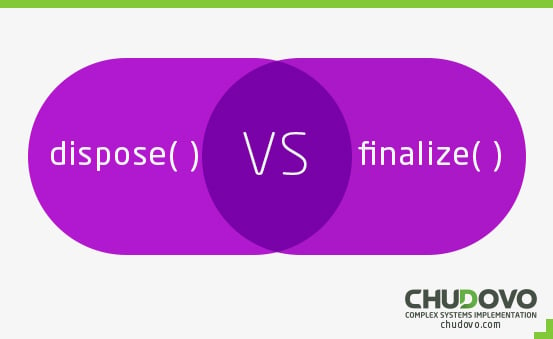Creating High-Performance Web Applications: The Role of .NET in Modern Web Development
The shift from static websites to interactive web applications has led to a transformative impact on various industries and the way users engage with online content. In the contemporary digital landscape, the demand for high-performance web applications has surged, driven by users’ increasing expectations for seamless experiences.
Table of content
- Introduction
- Unveiling .NET: A Framework for Performance
- The Power of Scalability in Web Applications
- Efficient Coding Practices for Peak Performance
- Frontend Frameworks and their Impact
- Integrating APIs for Enhanced Functionality
- Security Considerations in .NET Web Development
- Best Practices for Safeguarding High-Performance Applications
- Choosing the Right Architecture for .NET Web Apps
- Monitoring and Enhancing Performance
- Conclusion
- FAQ
Introduction
In an era where digital experiences reign supreme, the demand for high-performance web applications has reached unprecedented heights. Users expect seamless interactions, lightning-fast load times, and impeccable responsiveness. As technology advances, developers are tasked with meeting these expectations while also considering factors like scalability, security, and cross-platform compatibility. In this intricate dance of innovation and expectation, one technology stands as a steadfast ally: .NET. In this comprehensive guide, we’ll delve deep into high-performance web applications and explore the pivotal role that .NET plays in modern web development.
Understanding the Demand for High-Performance Web Applications
The online realm has evolved significantly since the early days of the internet. The shift from static websites to dynamic, interactive web applications has revolutionized how businesses operate and how users engage with content. Today, whether it’s e-commerce, social media, or productivity tools, web applications have become the backbone of many industries.
As the digital ecosystem continues to expand, so does the need for applications that can handle users’ increasing complexity and demands. High-performance web applications are not just a luxury; they are a necessity. A delay of a few seconds in page load times can result in frustrated users and potential revenue loss. Furthermore, the rise of mobile devices means that applications must be compatible with various screen sizes and operating systems, adding another layer of complexity to development.
The Crucial Role of .NET in Modern Web Development
In the world of web development, the .NET framework has emerged as a powerful ally in the pursuit of high-performance applications. Born from the house of Microsoft, .NET has continuously evolved to keep pace with the changing needs of developers and users alike. Its adaptability, versatility, and robust features make it ideal for building modern web applications that deliver exceptional user experiences.
Unveiling .NET: A Framework for Performance
At the heart of every exceptional web application lies a robust framework, and .NET emerges as a powerful contender. With its origins dating back to the early 2000s, .NET has continually evolved to keep up with the ever-changing landscape of web development. This framework has endured the test of time and has emerged stronger, more versatile, and more performance-driven than ever before.
Exploring the Versatility of .NET Core
At the heart of .NET’s evolution lies .NET Core, an open-source, cross-platform framework that has redefined how developers approach web application development. One of its standout features is its ability to run on multiple platforms, including Windows, Linux, and macOS. This cross-platform compatibility enhances development flexibility and allows applications to reach a wider audience.
5 Key Features Enabling High-Performance Web Applications
.NET Core comes equipped with many features designed to optimize application performance. Its runtime performance is exceptional, and its Just-In-Time (JIT) compilation ensures that applications execute with minimal overhead. Here are some key features enhancing high-performance web apps:
- Exceptional Speed: .NET Core’s Just-In-Time (JIT) compilation and optimized runtime performance deliver blazing-fast execution, ensuring rapid response times even under heavy loads.
- Scalability: The microservices-friendly architecture of .NET Core enables horizontal scaling, empowering applications to gracefully handle increasing traffic without compromising performance.
- Cross-Platform Compatibility: The ability to run on various platforms, including Windows, Linux, and macOS, makes .NET Core a frontrunner for cross-platform development.
- Efficient Memory Management: .NET Core’s garbage collection and memory allocation strategies contribute to efficient resource utilization and overall application stability.
- Real-Time Capabilities: SignalR, a real-time communication library, is seamlessly integrated into .NET Core, enabling developers to build interactive and dynamic web applications.

7 Benefits of Cross-Platform Development with .NET
With .NET Core, cross-platform development has become a reality. This streamlines the development process and allows businesses to target a diverse audience without compromising performance. This section explores the nuanced benefits of cross-platform development, coupled with .NET’s prowess, brings to the forefront of modern web development:
- Cost Efficiency and Resource Optimization: Building separate applications for different platforms can be resource-intensive. Cross-platform development with .NET eliminates redundant efforts, allowing developers to write code once and deploy it across multiple platforms. This approach not only saves time but also reduces development costs significantly.
- Expanding Audience Reach: The digital landscape is a diverse ecosystem comprising users on various operating systems and devices. Cross-platform applications built with .NET have the advantage of reaching a wider audience, tapping into user bases across Windows, Linux, and macOS environments.
- Accelerated Time-to-Market: Time-to-market is a critical success factor in the competitive software world. Cross-platform development accelerates this process by allowing developers to target multiple platforms simultaneously. This ensures that your application reaches users faster, gaining a competitive edge.
- Consistent User Experience: User experience is paramount to the success of any application. Cross-platform development with .NET ensures that users enjoy a consistent and cohesive experience, regardless of their device or platform. This consistency fosters trust and loyalty among users.
- Simplified Maintenance and Updates: Managing separate codebases for different platforms can be a nightmare regarding updates and bug fixes. With cross-platform development, developers work on a single codebase, streamlining the process of implementing updates and ensuring uniformity across all platforms.
- Flexibility and User Choice: Today’s Users have many choices regarding devices and platforms. Cross-platform applications built with .NET empower users to access your application on their preferred platform, contributing to a user-centric approach and higher user satisfaction.
- Future-Proofing Your Application: Technological landscapes evolve, and new platforms emerge. Cross-platform development equips your application with the adaptability needed for these changes. Whether it’s a new operating system or a device, your application remains relevant and accessible.
The Power of Scalability in Web Applications
When users flock to a web application, whether it’s to shop, connect, or consume content, they bring with them expectations of seamless interactions and swift responses. These expectations don’t waver, regardless of the application’s user base and complexity growth. Scalability is the invisible force that ensures these expectations are met while enabling the application to thrive under the weight of popularity.
Understanding How .NET Enhances Web Application Scalability
.NET, with its robust architecture and modular design, is inherently aligned with the pursuit of scalability. Its versatility allows developers to create applications that can adapt and expand without sacrificing performance. At the core of .NET’s scalability lies its microservices-friendly architecture, where applications are composed of loosely coupled services that can be scaled independently.
Strategies for Ensuring Seamless Growth
Achieving scalability isn’t a one-size-fits-all endeavor; it’s an art that involves careful planning and strategic execution. Here are some essential strategies that synergize with .NET to ensure that your web application’s growth journey is both smooth and triumphant:
- Load Balancing: Distributing Demands: Load balancing acts as the gatekeeper of user requests, distributing them intelligently across multiple servers. .NET’s compatibility with load balancers ensures even distribution of workloads, preventing any single server from becoming a bottleneck.
- Caching Mechanisms: Speed and Efficiency: Caching, the practice of storing frequently accessed data in a readily available location, can significantly reduce the load on backend servers. .NET’s in-built caching mechanisms provide developers with tools to implement caching strategies that enhance response times and overall application performance.
- Database Optimization: The Backbone of Scalability: Databases often bear the brunt of scalability challenges. By optimizing database design, indexing, and query execution, .NET developers can ensure that their application’s data layer scales gracefully, catering to growing user demands without compromising performance.
Real-Time Performance Enhancement with .NET
In a world where real-time interactions and dynamic content delivery are not just luxuries but expectations, scalability must extend to real-time capabilities. .NET’s inclusion of SignalR, a real-time communication library, further empowers developers to meet these expectations.
It is important to note that scalability isn’t just about handling more users; it’s about ensuring that those users receive the same exceptional experience regardless of whether they’re the first user or the millionth. As we conclude this exploration of scalability’s role in web applications, it’s evident that .NET’s architecture is an ally that empowers developers to build applications that scale and architect experiences that inspire trust, loyalty, and continued engagement.
Efficient Coding Practices for Peak Performance
Crafting high-performance web applications extends beyond choosing the right framework; it delves into efficient coding practices that maximize resource utilization and optimize execution speed.
5 Code Optimization Techniques in .NET
- Minimize Database Queries: Reducing the number of database queries through eager loading and caching minimizes the overhead on database servers.
- Use of Compiled Queries: Precompiled queries eliminate runtime query compilation, enhancing performance by reducing query execution time.
- Object Pooling: Reusing objects instead of creating new ones reduces memory allocation and garbage collection overhead.
- Lazy Loading: Loading data only when needed optimizes memory usage and reduces unnecessary data retrieval.
- Multithreading: Distributing tasks across multiple threads utilizes modern processors’ capabilities to the fullest, improving application responsiveness.
Tips for Leveraging C# Programming for Efficient Web Apps
Efficient web app development demands more than functional code, requiring strategic programming. C# offers techniques to boost performance, enhance responsiveness, and streamline development. Here are four essential tips to optimize your web apps using C#:
- Asynchronous Programming for Responsiveness
Asynchronous programming is essential for responsive web apps. With async and await, time-consuming tasks like database queries run in the background, keeping the user interface responsive. This ensures seamless user interactions and prevents the app from freezing during operations.
- Delegates and Events for Flexibility
Utilize delegates and events for flexible code. Delegates allow passing methods as parameters, and events notify occurrences. This decouples components, simplifying maintenance and adapting to changing requirements, resulting in efficient and adaptable web apps.
- Value Types for Memory Efficiency
Value types optimize memory usage. Stored directly where declared, they reduce memory overhead and enhance data access speed. Memory is conserved by using value types for simple data structures, contributing to smoother execution and greater responsiveness.
- Streamlined Data Manipulation with LINQ
LINQ simplifies data manipulation. It provides a unified syntax for querying various data sources, improving code readability and maintainability. Supporting arrays, collections, databases, and more, LINQ streamlines data tasks, resulting in more efficient web apps.
Implementing these C# techniques empowers you to craft efficient web apps that improve performance, responsiveness, and maintainability.
4 Strategies for Optimizing Data Processing in .NET
- Use of LINQ: Language Integrated Query (LINQ) simplifies querying data from various sources, reducing code complexity and improving readability.
- Streaming Operations: Employing streaming operations for data processing reduces memory consumption and enhances overall performance.
- Parallel Programming: Leveraging parallelism for tasks that can be executed concurrently optimizes CPU usage and speeds up data processing.
- Memory Management: Implementing proper memory management techniques, such as disposing of unused objects, prevents memory leaks and improves application stability.
It’s evident that the power to optimize performance lies within the intricacies of your code. Each decision made, each line written, has the potential to sculpt an application that stands as a testament to both innovation and precision.
Frontend Frameworks and Their Impact
While .NET primarily caters to backend development, the choice of frontend frameworks can significantly influence the overall performance of a web application.
Evaluating Frontend Frameworks in .NET Environment
The synergy between frontend frameworks and .NET is a testament to the harmony of technologies. The .NET ecosystem provides a robust foundation for backend development, and when coupled with the right frontend framework, it results in a harmonious user-centric application. Each frontend framework, whether it’s React, Angular, or Vue.js, brings a distinct set of tools and paradigms to the table, contributing to the development of efficient, dynamic, and visually appealing web applications.
Certified engineers Convenient rates Fast start Profitable conditions Agreement with English and German
EU company
speaking engineers
Balancing Client-Side and Server-Side Scripting
Here are three tips to guide you in effectively managing client-side and server-side scripting dynamics:
- Define Clear Responsibilities:
Delineate the roles of client-side (JavaScript) and server-side (PHP, Python, etc.) scripting. Client-side focuses on user interface and interactions, while server-side handles data processing and security.
- Enhance User Experience:
Leverage client-side scripting for instant feedback and smoother interactions. Tasks like form validation and dynamic content updates can be efficiently managed on the client-side, minimizing server load and optimizing user experience.
- Delegate Complexity:
Assign intricate computations and secure data handling to server-side scripting. Critical operations, such as financial calculations or database interactions, are more effectively managed on the server to ensure accuracy and data security.
In the delicate dance between client-side and server-side scripting, mastery lies in orchestrating their strengths to craft efficient, user-friendly web applications.

Integrating APIs for Enhanced Functionality
APIs (Application Programming Interfaces) serve as bridges that enable different software components to communicate and interact seamlessly. Integrating APIs into your .NET web development enhances functionality and user experience.
Seamless API Integration in .NET Web Development
Integrating APIs is akin to adding new instruments to an orchestra, enriching the symphony of your web application’s capabilities. In the context of .NET web development, API integration refers to seamlessly incorporating external services, data sources, or functionalities into your application’s architecture. This integration empowers developers to tap into a broader spectrum of features without reinventing the wheel, resulting in more efficient development cycles and a richer user experience.
5 Strategies for Choosing and Implementing Web APIs
- Define Clear Objectives: Understand the specific functionalities you aim to achieve through API integration and select APIs that align with these goals.
- Scalability Considerations: Choose APIs that can scale with your application’s growth, ensuring continued performance under increasing load.
- Authentication and Security: Prioritize APIs with robust authentication mechanisms to safeguard user data and application integrity.
- Documentation and Support: Opt for APIs with comprehensive documentation and responsive support channels for a smoother integration experience.
- Performance Benchmarks: Evaluate the performance metrics of APIs under consideration to ensure they meet your application’s performance standards.
Caching Strategies for Optimized .NET Web Apps
The following includes three caching Strategies for Optimized .NET Web Apps:
- Output Caching: This strategy involves caching the entire output of a web page or component. It reduces server load by serving cached content to subsequent requests, enhancing performance and responsiveness.
- Data Caching: Data retrieved from APIs can be cached to minimize repeated requests. This reduces network latency and improves data retrieval speed, contributing to a smoother user experience.
- Fragment Caching: Fine-tune caching by selectively caching specific portions of a web page that require dynamic rendering. This approach ensures that only dynamic elements are refreshed while static content remains cached.
Security Considerations in .NET Web Development
As the digital industry evolves, ensuring data security and privacy remains paramount. .NET equips developers with robust tools and practices to fortify their web applications against potential threats.
Best Practices for Safeguarding High-Performance Applications
- Authentication and Authorization: Implement secure authentication mechanisms and role-based authorization to ensure only authorized users access sensitive data and functionalities.
- Data Encryption: Encrypt sensitive data at rest and during transit to prevent unauthorized access.
- Regular Updates and Patching: Stay vigilant about security updates for your application’s components, including frameworks, libraries, and third-party tools.
- Input Validation: Thoroughly validate and sanitize user inputs to prevent common vulnerabilities like SQL injection and cross-site scripting (XSS).

Choosing the Right Architecture for .NET Web Apps
The architecture of your web application forms its structural foundation. The right architecture is pivotal for creating scalable, maintainable, high-performance applications.
Key Considerations for Architectural Decisions
- Scalability Requirements: Determine the scalability needs of your application to select an architecture that can accommodate future growth.
- Modularity and Maintainability: An architecture that promotes modularity and clean separation of concerns facilitates easier maintenance and updates.
- Microservices vs. Monolith: Choose between a microservices architecture, offering flexibility and scalability, and a monolithic architecture, which may be more suitable for simpler applications.
- Performance Optimization: Opt for an architecture that optimizes data retrieval and processing, minimizing bottlenecks and enhancing overall performance.
Monitoring and Enhancing Performance
Even with the best intentions and practices, performance issues can arise. Implementing robust monitoring and diagnostic tools can help identify bottlenecks and areas for improvement.
Tools for Monitoring and Diagnosing .NET App Performance
- Application Performance Monitoring (APM) Tools: APM tools provide real-time insights into your application’s performance, helping you identify and resolve issues promptly.
- Profiling Tools: Profiling tools offer detailed insights into the execution of your application’s code, allowing you to identify performance bottlenecks and resource-intensive processes.
- Logging and Error Tracking: Implement comprehensive logging and error tracking mechanisms to capture issues and anomalies for analysis.
Conclusion
In the changing landscape of web development, the role of .NET in creating high-performance web applications is pivotal. With its robust framework, cross-platform capabilities, scalability features, and security mechanisms, .NET empowers developers to create modern, efficient, and scalable solutions that meet the demands of a dynamic digital world. As industries continue to evolve, .NET remains a steadfast ally, enabling developers to craft applications that meet and exceed user expectations for performance, responsiveness, and innovation.
FAQ
How does the .NET framework contribute to creating high-performance web applications?
The .NET framework enhances web application performance through features like runtime optimization, modular architecture, and cross-platform compatibility. Its efficient code execution and support for scalable architectures make it ideal for high-performance applications.
How does .NET enhance the scalability of web applications?
.NET provides tools for horizontal and vertical scalability, making handling varying levels of user demand easier. Its support for microservices architecture allows developers to scale specific components independently, optimizing resource utilization.
How does .NET enable cross-platform development for web applications?
.NET Core, an open-source framework, enables developers to build web applications that run on Windows, Linux, and macOS platforms. This cross-platform compatibility streamlines development and widens the application’s reach.
How can .NET be utilized to enhance the performance of real-time web applications?
.NET’s SignalR library enables seamless integration of real-time communication into web applications. This enhances user engagement and contributes to overall application performance.
Do you need custom .Net Development Services that align with your IT objectives and operational workflows? Chudovo .Net development solution is your answer.






